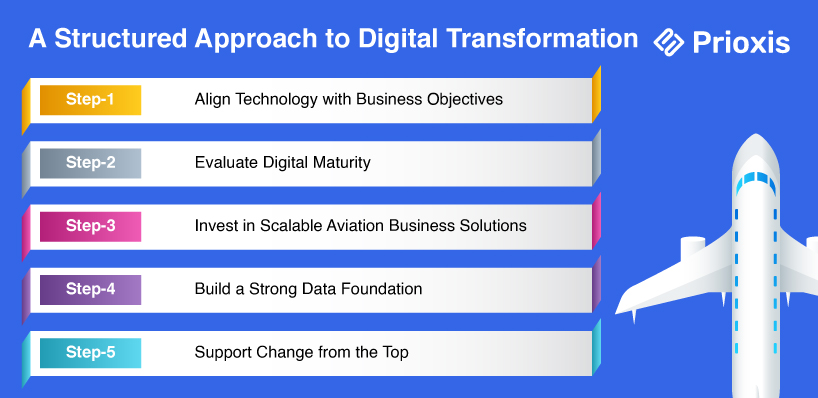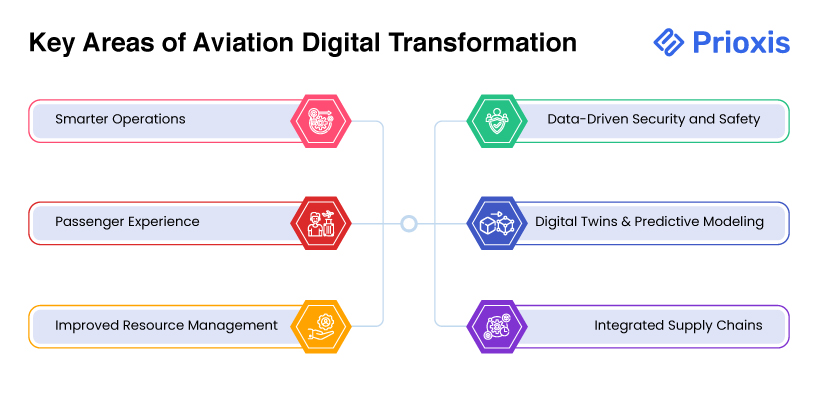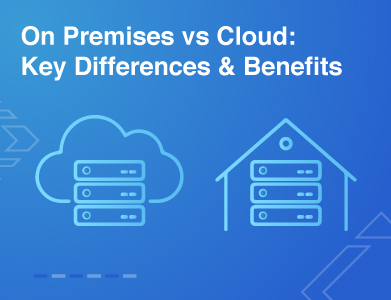Expertise
The Shift Is Structural, Not Just Digital
Aviation has always operated on precision, but the tools behind the scenes haven’t always kept up. Digital transformation in aviation is not about adding a few smart systems or launching a mobile app. It’s about realigning technology with core business operations—making processes faster, decisions smarter, and experiences better across the board.
The industry is reaching a point where traditional systems no longer support the complexity of modern operations. From airlines managing thousands of daily flights to manufacturers monitoring global supply chains, the shift is happening because it has to.
What’s Driving the Push of Airline Digital Transformation
Operational Complexity Has Grown
With tighter schedules, higher volumes, and global coordination, aviation operations now involve thousands of moving parts. Manual coordination and outdated legacy systems often create silos, delays, and costly inefficiencies. Aviation business solutions powered by modern aviation software development offer integrated workflows, predictive analytics, and automation at scale.
Expectations Keep Rising
Passengers expect real-time updates, seamless service, and digital convenience at every step. Internal teams expect modern tools to do their jobs efficiently. Meeting these expectations requires integrated, responsive systems built on solid aviation software development practices.
Compliance Is No Longer Manual
Regulatory requirements are becoming more detailed, especially around safety, emissions, and cybersecurity. Spreadsheets and siloed tools can't keep up with modern reporting demands. Digital solutions offer traceability, audit readiness, and faster response to changes in regulation.
Cost and Sustainability Pressures Are Intensifying
The need to reduce fuel consumption, manage maintenance more effectively, and lower turnaround times continues to grow. Digital transformation enables data-driven strategies that directly affect both profitability and environmental performance.
Industry Insight
Airports are evolving into digital hubs. From automated border control to AI-powered security screening, the ground game is smarter than ever.
Heathrow and Amsterdam Schiphol are investing heavily in aviation digital transformation. Smart baggage systems, biometric boarding, and data-sharing platforms are cutting delays and enhancing passenger flow.
In Doha and Dubai, airports have integrated real-time data dashboards and IoT sensors into infrastructure embedded from day one.
Key Areas of Aviation Digital Transformation
Airline Digital Transformation
Airline operations touch everything from flight planning to passenger interaction. Digital tools help unify these areas so that decisions in one part of the operation improve outcomes in another.
- Smarter Operations
Electronic flight bags, real-time weather analysis, and digital crew scheduling reduce delays and improve safety. Predictive maintenance systems cut unscheduled groundings and lower maintenance costs.
- Passenger Experience
Integrated booking systems, dynamic pricing, and automated communication improve customer satisfaction and loyalty. Passengers benefit from fewer surprises and more control over their journey.
Airport Digital Transformation
Airports are complex ecosystems with multiple stakeholders. Coordinating everything—from baggage handling to gate assignment—requires real-time data and responsive systems.
- Improved Resource Management
Digital dashboards allow airports to monitor gate usage, passenger flow, and service demand. Automated decision tools reduce congestion and streamline aircraft movements.
- Data-Driven Security and Safety
Digital surveillance, biometric access control, and smart screening systems enhance security without slowing down operations.
Aerospace Digital Transformation
In aerospace manufacturing and MRO, efficiency and traceability are essential. As aircraft systems become more complex, the tools to build and maintain them need to evolve as well.
- Digital Twins and Predictive Modeling
Manufacturers are using digital models to simulate how components perform over time. These insights guide design improvements and optimize maintenance cycles.
- Integrated Supply Chains
Real-time visibility into parts availability, delivery schedules, and supplier performance reduces delays and improves production planning. Blockchain and RFID technologies are making traceability more robust and reliable.
A Structured Approach to Digital Transformation

Step 1: Align Technology with Business Objectives
Start with strategy, not tools. Digital efforts should not exist in isolation. Start with clear business goals—whether it’s reducing fuel costs, improving on-time performance, or simplifying regulatory reporting. Then build or select technology to support those outcomes.
Step 2: Evaluate Digital Maturity
Audit your digital maturity by assessing current systems, data quality, and team capabilities. Identify areas where manual work creates risk or delays. This assessment becomes the foundation for your transformation roadmap.
Step 3: Invest in Scalable Aviation Business Solutions
Modern aviation software development focuses on modular, flexible platforms. Choose tools that integrate easily with existing systems and support growth over time. Prioritize open architecture and APIs to avoid costly lock-ins.
Step 4: Build a Strong Data Foundation
Digital transformation in aviation depends on accurate, accessible data. Standardize data formats, eliminate duplication, and invest in platforms that allow real-time access across teams.
Step 5: Support Change from the Top
Digital systems only deliver value when they’re used consistently. Leadership must set the tone, allocate resources, and champion a culture that embraces change. Training and communication are critical at every stage.
Practical Risks to Avoid
Overinvestment in Disconnected Tools: Fragmented systems slow down operations and increase costs.
Underestimating Integration Challenges: New systems must work with legacy infrastructure. Don’t overlook the need for middleware or data translation layers.
Neglecting User Experience: Whether it’s a flight planner, baggage handler, or technician, the tools must be intuitive and relevant to their workflows.
Missing the Long-term Plan: Digital transformation is not a one-time project. It’s an ongoing strategy that needs regular review and adaptation.
Why Software in Aviation Matters More Than Ever
Digital transformation is a journey, not a destination. It takes vision, investment, and yes, patience. The common mistakes? Overengineering solutions. Underinvesting in change management. Ignoring the frontline staff who actually use the tools.
You’re not just upgrading IT systems. You’re reinventing how your organization thinks, works, and delivers value. Software in aviation now influences everything from ticket pricing to tail number performance. So, bring your tech team to the table early for Aviation software development. It powers predictive maintenance, passenger personalization, and route optimization. Done right, it creates agility, lowers costs, and reduces risk. Budget for evolution, not just implementation. And keep your eyes on the horizon—because in aviation, the ground is always moving.
Whether building internal tools or selecting external partners, aviation business leaders need solutions that can scale, integrate, and evolve. is no longer just IT’s domain—it’s part of the core business strategy.
Final Thoughts
Digital transformation in aviation is not just about being modern. It’s about building resilience, agility, and efficiency in every part of the operation. Use strategy to guide the journey. Use data to fuel it. And use people—empowered, trained, and engaged—to make it fly.
Because in the end, successful digital transformation in aviation is about aligning technology with purpose. And when that happens, the sky’s not the limit. It’s just the beginning.
It enables faster decisions with better data, improves coordination across functions, and creates more room for innovation. As the industry moves forward, those who treat digital transformation as a structural shift and not just a technology upgrade will be better positioned to lead.
And in this industry, leadership means staying in motion, even when conditions change.











